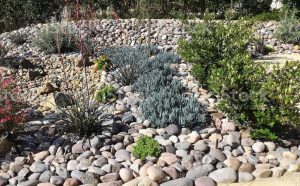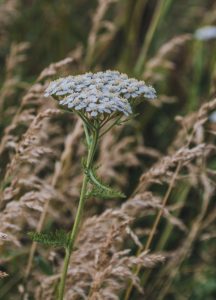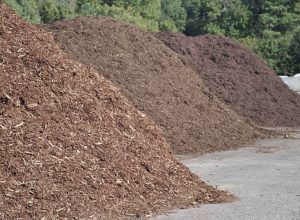In the lush landscapes of British Columbia, where rain is abundant, the idea of water conservation might not immediately come to mind. However, responsible water usage is crucial for sustainability and ensuring the health of our environment. Enter xeriscaping: an innovative approach to landscaping that combines water conservation with aesthetic appeal. This blog aims to provide homeowners, gardeners, and commercial landscapers in British Columbia with the principles of xeriscaping, offering friendly and engaging tips for creating beautiful gardens that require minimal water. Let’s dive into the art of xeriscaping and discover how it can transform our outdoor spaces while emphasizing the importance of water conservation.

Understanding Xeriscaping:
- Xeriscaping is a technique that focuses on designing gardens requiring minimal water maintenance. By carefully selecting drought-tolerant plants, using efficient irrigation methods, and optimizing soil health, xeriscaping can create visually stunning landscapes that thrive in British Columbia’s wet climate.

Plant Selection:
- Regarding xeriscaping in British Columbia, it’s essential to withstand drought and rainfall. Native plants are crucial, such as Pacific Northwest species, are well-adapted to the region’s climate and require minimal water once established. Examples include Oregon grape, salal, yarrow, and sword ferns. Incorporate a variety of textures, colours, and heights to create visually appealing landscapes that mimic the beauty of nature.

Soil Health and Mulching:
- Healthy soil plays a vital role in xeriscaping. Improve your soil’s water retention capabilities by adding organic matter such as compost and mulch. Mulching not only conser by reducing evaporation but also suppresses and regulates soil temperature and improves overall soil health. Consider using organic mulches like wood chips or straw to enhance the aesthetic appeal of your garden.
Efficient Irrigation:
- Even in a wet climate like British Columbia’s, efficient irrigation systems are crucial to xeriscaping success. Install a drip irrigation system that delivers water directly to plant roots, minimizing water waste through evaporation or runoff. Additionally, consider incorporating rainwater harvesting systems, like rain barrels or underground cisterns, to collect and utilize rainwater for irrigation during dry periods.

Hardscaping and Design:
- Xeriscaping is not limited to plant selection alone. Incorporating hardscape elements such as gravel pathways, decorative rocks, and retaining walls can add visual interest to your landscape while reducing the need for watering. Properly designed pathways and patios can also help manage water runoff, directing it to areas where it can be effectively absorbed.
Case Studies:
1. Residential Garden:
The Smiths of Vancouver transformed their water-thirsty lawn into a vibrant xeriscape garden. By selecting native plants and incorporating rock features, they achieved an eye-catching landscape that requires minimal watering. With a combination of drip irrigation and rainwater harvesting, they have significantly reduced their water consumption while enjoying a visually stunning garden.
2. Public Space:
The Stanley Park Rose Garden in Vancouver serves as a remarkable example of xeriscaping in a public setting by utilizing drThees the beauty of xeriscaping while minimizing water usage and maintenance costs.
Xeriscaping by utilizing drought-tolerant rose varieties, mulching, and efficient irrigation systems is an art that blends water conservation and aesthetic appeal, even in British Columbia’s wet climate. By adopting the principles of xeriscaping, homeowners, gardeners, and commercial landscapers can create beautiful outdoor spaces that require minimal water maintenance. Through careful plant selection, soil health optimization, efficient irrigation, and creative hardscaping, we can enjoy the beauty of nature while reducing our environmental impact. Let’s embrace the art of xeriscaping and contribute to water conservation efforts in our communities, making British Columbia’s landscapes even more vibrant and sustainable.